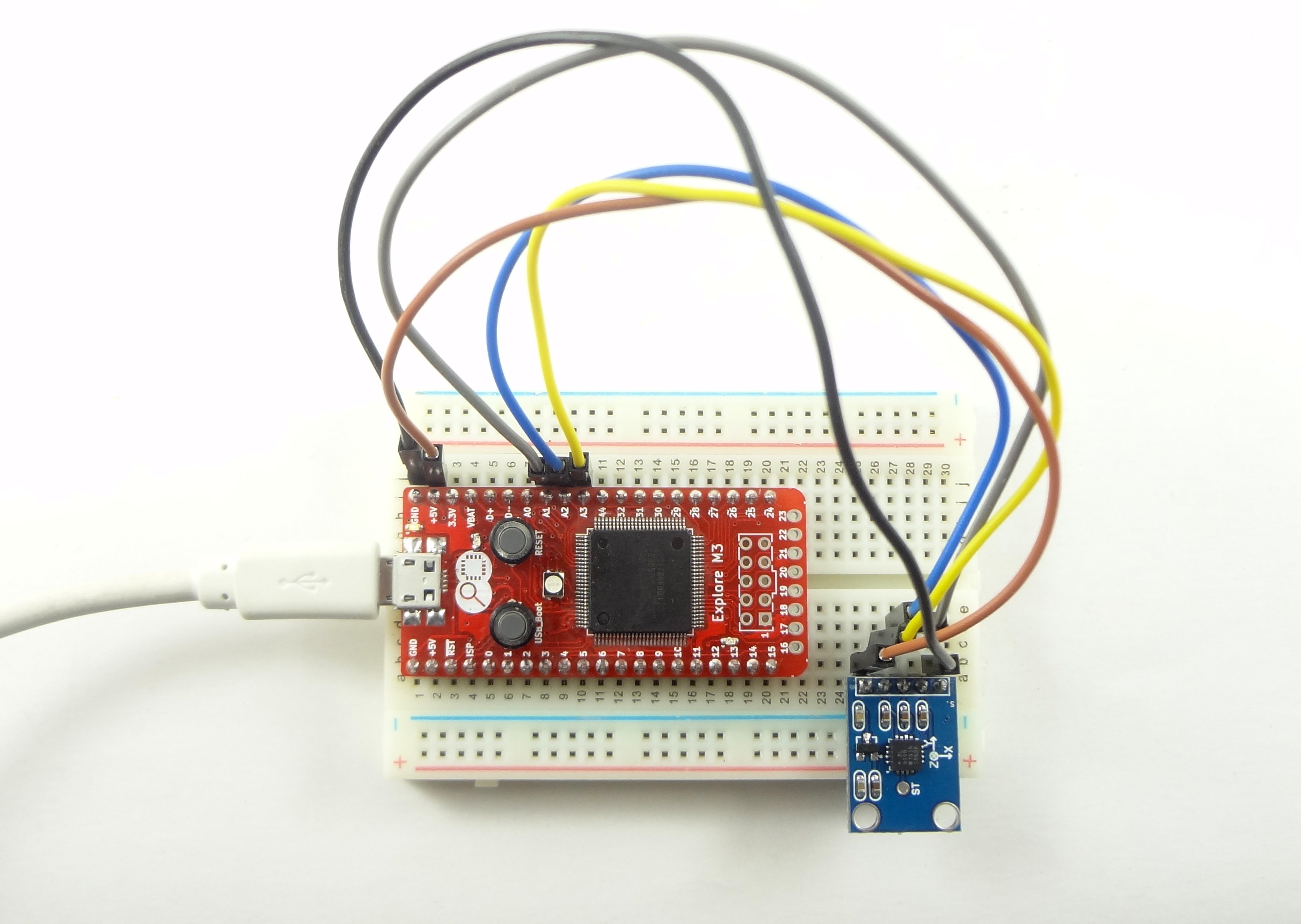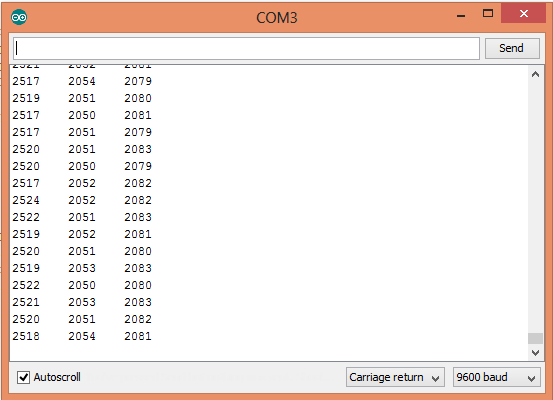Accelerometer ADXL335 with Explore M3
The ADXL335 is an three axis analog accelerometer which outputs raw X, Y and Z axis values on three pins. Let's connect these to the analog input pins on Explore M3 and log the data to the serial monitor.
Hookup
| Explore M3 | ADXL335 |
|---|---|
| 5v | 5v |
| GND | GND |
| A3 | X axis pin |
| A2 | Y axis pin |
| A1 | Z axis pin |
Code
This is a standard Arduino example that I will be using. We will make a tutorial some time later to do some math and put the accelerometer to good use.


